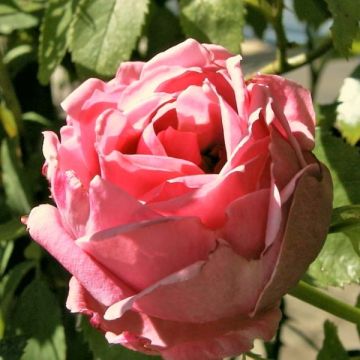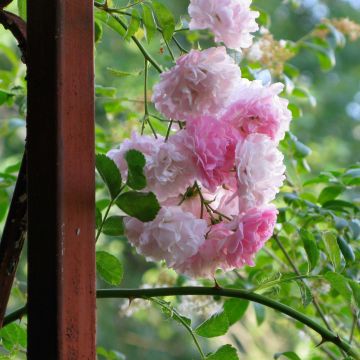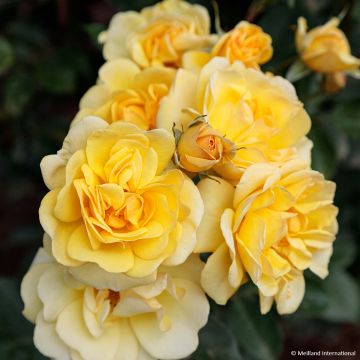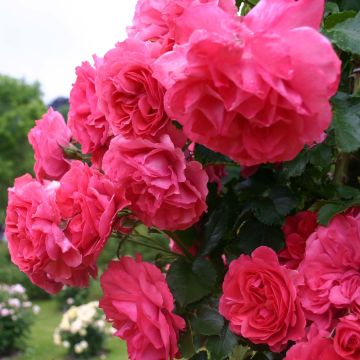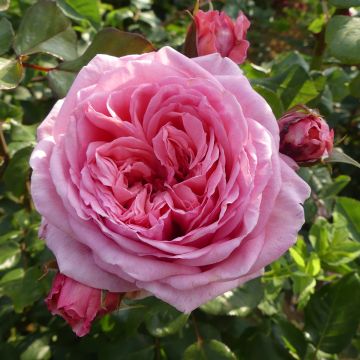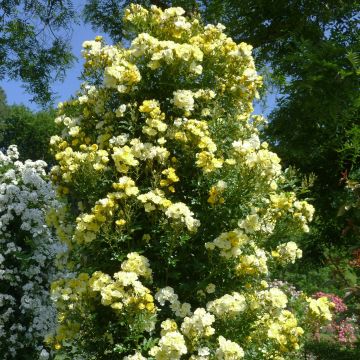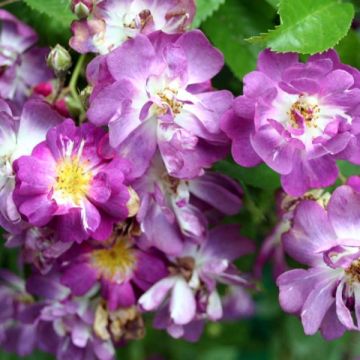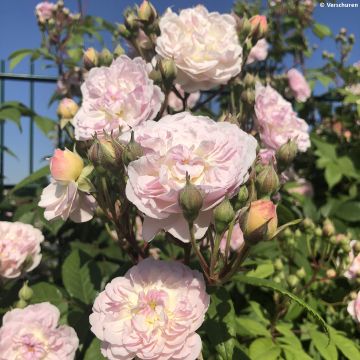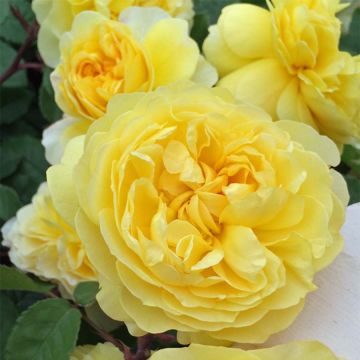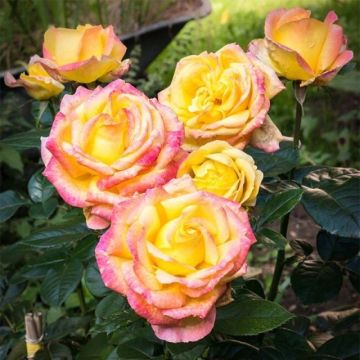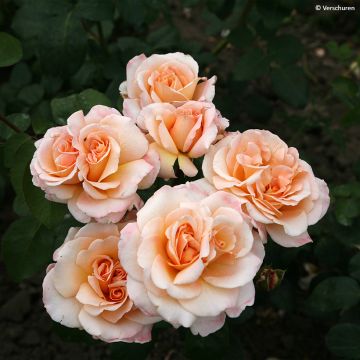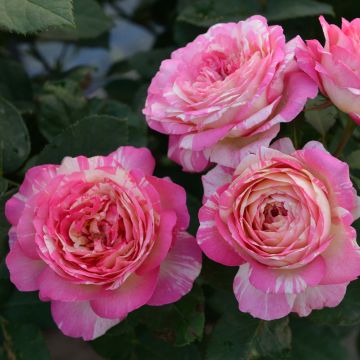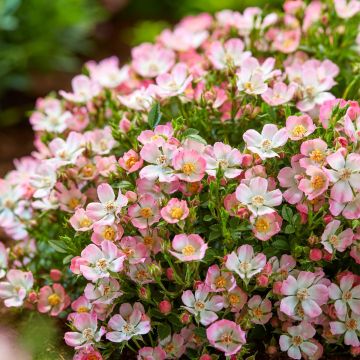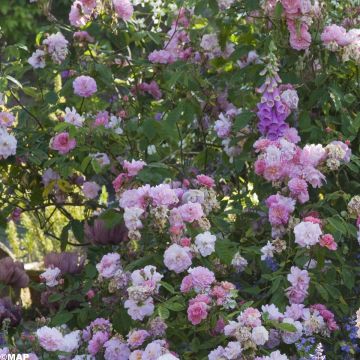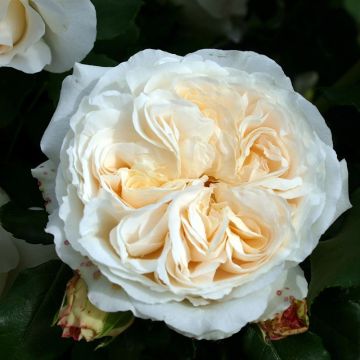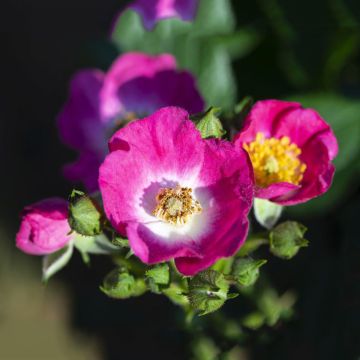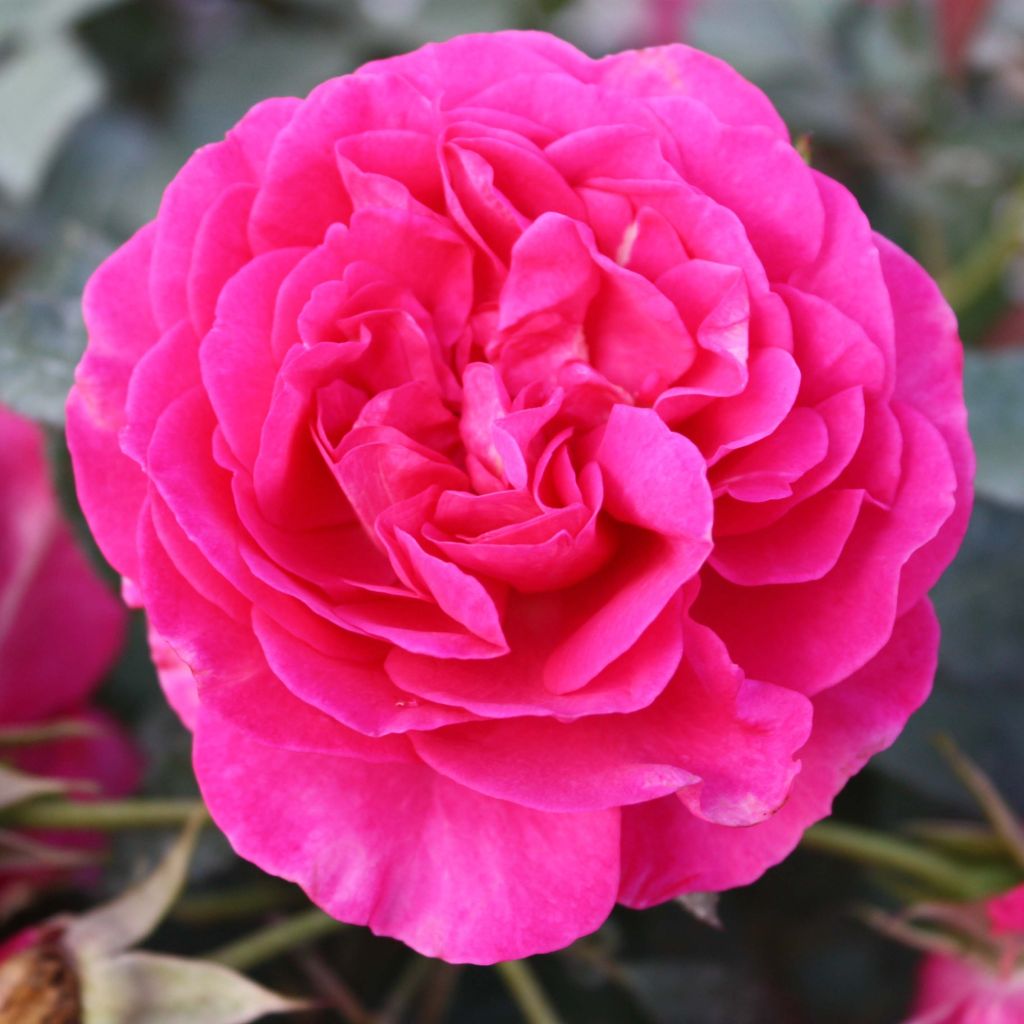

Rosa x wichuraiana 'Dorothy Perkins'
Rosa x wichuraiana 'Dorothy Perkins'
Rosa x wichuraiana Dorothy Perkins
Climbing Rose 'Dorothy Perkins'
This item cannot be shipped to the selected country
Delivery charge from €5.90
Delivery charge from €5.90
Delivery to Corse prohibited
More information
Schedule delivery date,
and select date in basket
This plant carries a 6 months recovery warranty
More information
We guarantee the quality of our plants for a full growing cycle, and will replace at our expense any plant that fails to recover under normal climatic and planting conditions.
From €5.90 for pickup delivery and €6.90 for home delivery
Express home delivery from €8.90.
From €5.90 for pickup delivery and €6.90 for home delivery
Express home delivery from €8.90.
Delivery to Corse prohibited: UE law prohibits the import of this plant from mainland France to Corse as part of the fight against Xylella fastidiosa. Please accept our sincere apologies.
More information
Does this plant fit my garden?
Set up your Plantfit profile →
Description
The Dorothy Perkins Rose, born in 1901, remains one of the most well-known and appreciated old climbing roses despite its susceptibility to powdery mildew and its rather late flowering. This variety combines undeniable ornamental qualities and generosity with easy cultivation in most of our gardens. Its miniature double roses are reminiscent of pompoms, evolving from bright pink to almost white, creating charming garlands of pink shades. With a flourishing habit, this climbing rose is very versatile; it can also be grown as a bush or form a large ground cover, depending on the preferences of each gardener. From its ancestor Rosa wichuraiana, Dorothy Perkins inherited robustness and good resistance to climatic extremes: it is unaffected by cold, rain, and heat; nothing can defeat it, not even powdery mildew!
This exceptional climbing rose is an American creation by Jackson and Perkins, dating back to 1901. Strictly speaking, it is not an old rose, as it was created after 1867, but it has all the characteristics and is classified as such. This horticultural hybrid is part of the complex Rosa Wichuraiana family. The Asian ancestor of this family of excellent climbing roses, Rosa luciae, forms thickets in coastal regions and seaside cliffs and grows on limestone soils. It has passed on some interesting characteristics, such as glossy and dark foliage, beautiful vigour, and a unique but very generous flowering.
'Dorothy Perkins' develops long, upright, green stems with sharp, reddish prickles, flexible enough to be trained. It has a bushy and flourishing habit, reaching 4 to 5 metres (13 to 16 feet) in height with a minimum spread of 2 metres (7 feet). Its long stems are flexible and covered with finely cut glossy foliage composed of 7 thin leaflets, unfortunately almost always covered by white powdery mildew spots, just like its distant cousin Rosa banksia Alba Plena. The plant's vigour is such that this disease seems to neither affect nor prevent it from flowering. The countless small, fully double rosettes of Dorothy Perkins, 3 cm (1in) wide, appear in June-July and continue for four weeks, almost hiding the foliage. They emerge on short shoots from the second year in clusters of 10 to 20 buds, starting with a bright candy pink shade that lightens over time. Dazzling as they are, they are unfortunately scentless. This hybrid does not produce fruit.
'Dorothy Perkins' is a timeless climbing rose, an incurable romantic one would love to invite into the garden just for its robustness and floribundity. Like other climbers, it is incomparable for adorning gates, fences, and small pergolas. Still, its vigorous growth also allows it to thrive without support in a flowering hedge alongside a vigorous clematis like 'Montana' or 'Prince Charles, gracefully spreading out on a lawn or being planted behind overly strict flower beds. It is an ideal companion for reviving dead trees or sheds that give a charming touch. Trained on an arch, on an ugly fence or a somewhat austere shed, it dresses up any setting without demanding much effort from the one who planted it.
Report an error about the product description
Rosa x wichuraiana 'Dorothy Perkins' in pictures
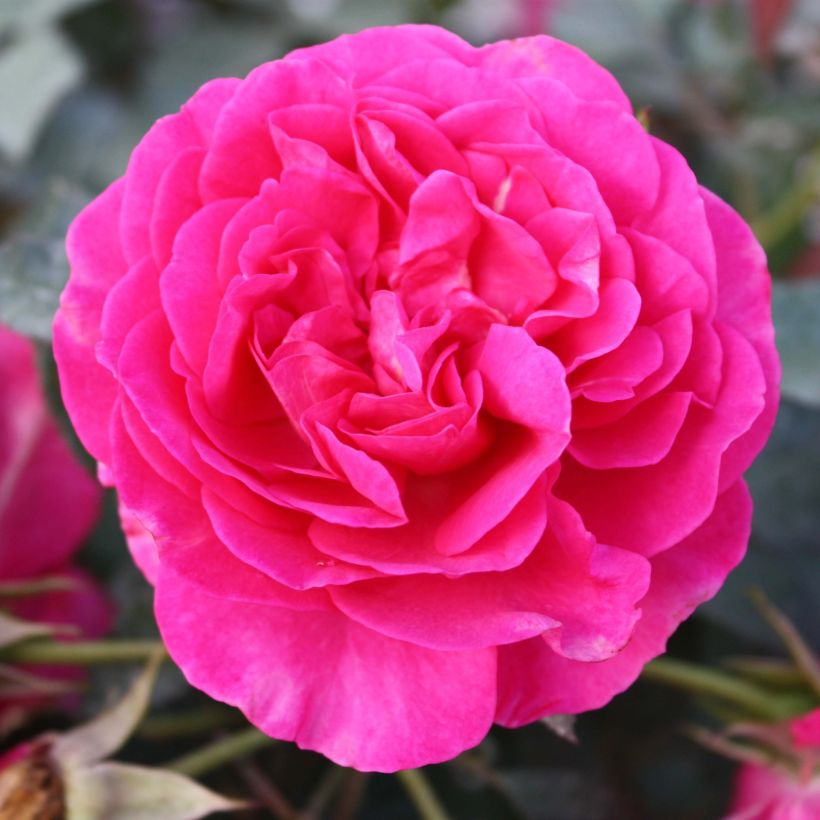

Plant habit
Flowering
Foliage
Botanical data
Rosa
x wichuraiana
Dorothy Perkins
Rosaceae
Climbing Rose 'Dorothy Perkins'
Cultivar or hybrid
Other Climbing Roses
Planting and care
The Dorothy Perkins climbing rose prefers sunny locations but does not do well in hot and confined areas, which increases its susceptibility to powdery mildew. It's best to avoid training it against south or west-facing walls. Although it can tolerate excessive limestone, it prefers fertile and fresh soils that allow it to reach its full potential. It can adapt to any garden, provided the soil is well-worked and sufficiently rich. To plant your rose, crumble the soil and place an amendment, such as blood, fish and bone, at the bottom of the planting hole. Water generously after planting to eliminate air pockets and regularly for a few weeks to facilitate root growth during the first two dry and hot summers. Pruning this rose is only necessary to limit its exuberance, and if its spreading bothers you, don't hesitate to reduce its branches. Since the flowering is not perpetual, removing faded flowers is unnecessary, except for aesthetic reasons.
Roses are often stained or unsightly at the end of summer, but this is not a problem for their development. These spots are not harmful to the rose; they are a natural phenomenon.
Planting period
Intended location
Care
-
, onOrder confirmed
Reply from on Promesse de fleurs
Roses by purpose
Haven't found what you were looking for?
Hardiness is the lowest winter temperature a plant can endure without suffering serious damage or even dying. However, hardiness is affected by location (a sheltered area, such as a patio), protection (winter cover) and soil type (hardiness is improved by well-drained soil).

Photo Sharing Terms & Conditions
In order to encourage gardeners to interact and share their experiences, Promesse de fleurs offers various media enabling content to be uploaded onto its Site - in particular via the ‘Photo sharing’ module.
The User agrees to refrain from:
- Posting any content that is illegal, prejudicial, insulting, racist, inciteful to hatred, revisionist, contrary to public decency, that infringes on privacy or on the privacy rights of third parties, in particular the publicity rights of persons and goods, intellectual property rights, or the right to privacy.
- Submitting content on behalf of a third party;
- Impersonate the identity of a third party and/or publish any personal information about a third party;
In general, the User undertakes to refrain from any unethical behaviour.
All Content (in particular text, comments, files, images, photos, videos, creative works, etc.), which may be subject to property or intellectual property rights, image or other private rights, shall remain the property of the User, subject to the limited rights granted by the terms of the licence granted by Promesse de fleurs as stated below. Users are at liberty to publish or not to publish such Content on the Site, notably via the ‘Photo Sharing’ facility, and accept that this Content shall be made public and freely accessible, notably on the Internet.
Users further acknowledge, undertake to have ,and guarantee that they hold all necessary rights and permissions to publish such material on the Site, in particular with regard to the legislation in force pertaining to any privacy, property, intellectual property, image, or contractual rights, or rights of any other nature. By publishing such Content on the Site, Users acknowledge accepting full liability as publishers of the Content within the meaning of the law, and grant Promesse de fleurs, free of charge, an inclusive, worldwide licence for the said Content for the entire duration of its publication, including all reproduction, representation, up/downloading, displaying, performing, transmission, and storage rights.
Users also grant permission for their name to be linked to the Content and accept that this link may not always be made available.
By engaging in posting material, Users consent to their Content becoming automatically accessible on the Internet, in particular on other sites and/or blogs and/or web pages of the Promesse de fleurs site, including in particular social pages and the Promesse de fleurs catalogue.
Users may secure the removal of entrusted content free of charge by issuing a simple request via our contact form.
The flowering period indicated on our website applies to countries and regions located in USDA zone 8 (France, the United Kingdom, Ireland, the Netherlands, etc.)
It will vary according to where you live:
- In zones 9 to 10 (Italy, Spain, Greece, etc.), flowering will occur about 2 to 4 weeks earlier.
- In zones 6 to 7 (Germany, Poland, Slovenia, and lower mountainous regions), flowering will be delayed by 2 to 3 weeks.
- In zone 5 (Central Europe, Scandinavia), blooming will be delayed by 3 to 5 weeks.
In temperate climates, pruning of spring-flowering shrubs (forsythia, spireas, etc.) should be done just after flowering.
Pruning of summer-flowering shrubs (Indian Lilac, Perovskia, etc.) can be done in winter or spring.
In cold regions as well as with frost-sensitive plants, avoid pruning too early when severe frosts may still occur.
The planting period indicated on our website applies to countries and regions located in USDA zone 8 (France, United Kingdom, Ireland, Netherlands).
It will vary according to where you live:
- In Mediterranean zones (Marseille, Madrid, Milan, etc.), autumn and winter are the best planting periods.
- In continental zones (Strasbourg, Munich, Vienna, etc.), delay planting by 2 to 3 weeks in spring and bring it forward by 2 to 4 weeks in autumn.
- In mountainous regions (the Alps, Pyrenees, Carpathians, etc.), it is best to plant in late spring (May-June) or late summer (August-September).
The harvesting period indicated on our website applies to countries and regions in USDA zone 8 (France, England, Ireland, the Netherlands).
In colder areas (Scandinavia, Poland, Austria...) fruit and vegetable harvests are likely to be delayed by 3-4 weeks.
In warmer areas (Italy, Spain, Greece, etc.), harvesting will probably take place earlier, depending on weather conditions.
The sowing periods indicated on our website apply to countries and regions within USDA Zone 8 (France, UK, Ireland, Netherlands).
In colder areas (Scandinavia, Poland, Austria...), delay any outdoor sowing by 3-4 weeks, or sow under glass.
In warmer climes (Italy, Spain, Greece, etc.), bring outdoor sowing forward by a few weeks.


































